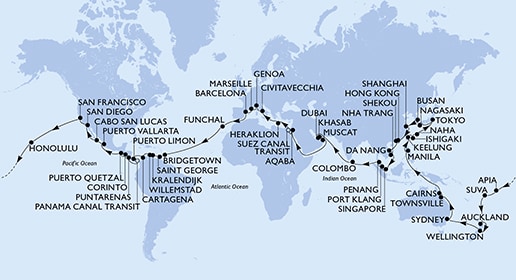
Port Nagasaki
The city of Nagasaki in Japan holds significant importance in the global cruise industry. It serves as a major port for several international cruise liners, providing them with essential docking and maintenance facilities. The city is strategically located, making it an attractive and convenient stopover for cruise ships sailing across the Pacific and Asian waters.
Activities related to cruise ships in Nagasaki are not limited to just docking and maintenance. The city offers a rich cultural and historical experience for tourists disembarking from these cruise ships. Major attractions include the Nagasaki Peace Park, Atomic Bomb Museum, and the historic Dejima, a former Dutch trading post. These activities significantly contribute to Nagasaki's tourism industry, making cruise ships an integral part of the city's economy.
History
The history of the port of Nagasaki in Japan is both rich and significant. Nagasaki was Japan's second city, after Hakodate, to be opened to foreign trade in the 1850s. For much of the Edo period, it was the sole gateway to the outside world, serving as the only port where limited foreign trade was permitted under the sakoku policy.
In the late 16th century, Nagasaki gained international prominence when Portuguese traders arrived, making it a crucial hub for Christian missionary activities in Japan. The port's history took a dark turn in 1945 when it became the target of the second atomic bombing during World War II. Despite the devastation, Nagasaki has since rebounded and now stands as a thriving, vibrant city with a busy port.



